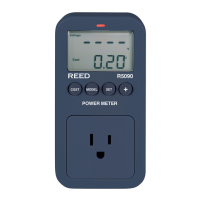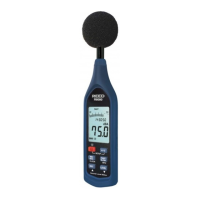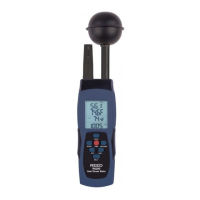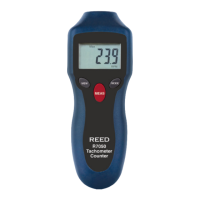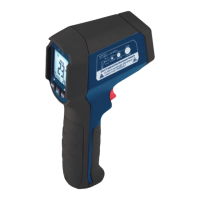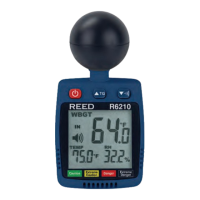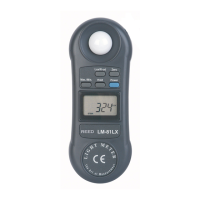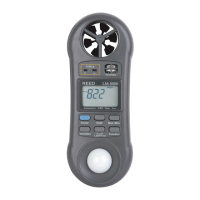16
www.REEDINSTRUMENTS.com
Relative Mode
1. ToreservethecurrentDUTreadings(DCUR)ontheprimarydisplay
asareferencevalue(DREF),pressthe button.
2.
The ∆ symbol will then appear on the LCD screen indicating this function
is now active. The secondary display will show the percentage of the
relativevalue(REL%).
3. Press the buttonagaintoshowthereferencevalue(DREF)onthe
primarydisplay;the∆symbolwillstarttoblink.
REL%=(DCUR–DREF)/DREFx100%
Note:Thepercentagerangeis-99.9%to99.9%.Whentherelativevalue
islargerthandoublethereferencevalue(DREF),the"OL%"symbolwill
appear on the secondary display.
4.
Press and hold down the buttonforapproximately3secondsto
exitrelativemodeandresumenormaloperation.
Accuracy Discrepancies
In some special cases, inaccuracies may occur in the measurement of
capacitive, inductive, and resistive components. This section provides
some recommendations and suggestions to consider.
Capacitance
It is strongly recommended to have the dissipation factor low when measuring
capacitors. Electrolytic capacitors inherently have a higher dissipation factor
due to their normally high internal leakage characteristics. In some cases, if
D(dissipationfactor)isexcessive,measurementaccuracymaydegradeand
even read out of speci cation.
Inductance
Some inductors are intended to operate at a certain DC bias to achieve a
certain inductance value, however this meter cannot produce such a biasing
scheme.Externalbiasingshouldnotbeattemptedbecauseexternalpower
would be applied to the instrument and cause serious damage to the meter.
Therefore, in some cases, the inductance reading may not agree with
manufacturer's speci cation. It is important to check if the speci cation
pertains to DC biasing or not.
continued...
1.800.561.8187 info@REED-Direct.ca
REED-Direct.ca
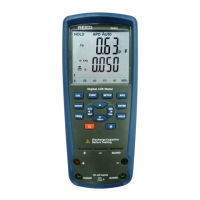
